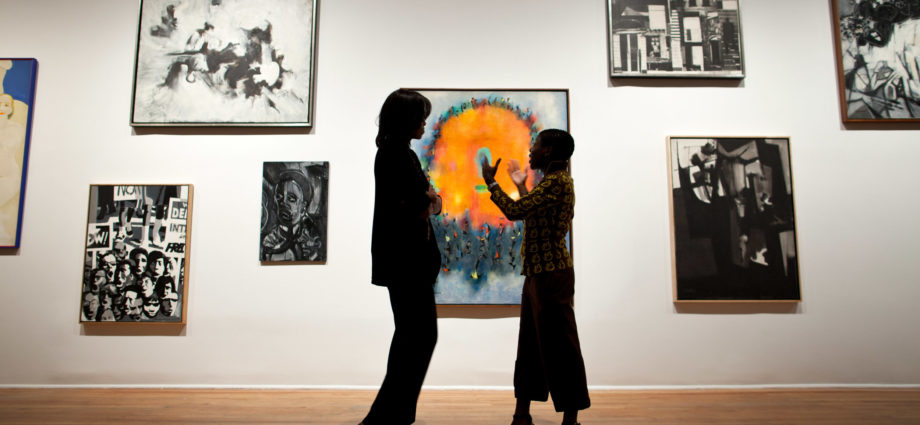Rating: 4/5
The new HBO documentary, “Black Art: In the Absence of Light,” was released on Feb. 9, 2021 and is available to stream on HBO Max. The film is centered around the 1976 exhibition “Two Centuries of Black American Art” and explores the depth of Black art through multiple generations of contemporary artists, scholars, and curators.
In “Black Art: In the Absence of Light,” director Sam Pollard showcases some of the most important moments of U.S. art history. Pollard’s topics range from the Metropolitan Museum of Art’s failed 1967 “Harlem on My Mind” exhibition, which led to protests that criticized the exhibition for only featuring a single artist from Harlem, to the 2018 unveiling of the Nation Portrait Gallery’s official portraits of Barack and Michelle Obama, which, for the first time, were created by African-American artists. The film also highlights the Studio Museum, a museum in Harlem dedicated to the work of African artists, and presents opportunities for artists to work in a studio in a residency.
The introduction of these exhibits leads to a meaningful discussion about the lineage of Black art and how each generation affects one another. For example, the discussion of Thelma Golden’s 1994 exhibition “Black Male” subsequently displayed an evolution in Black art and its culture at the time. The exhibit had many bold works, like Lyle Ashton Harris’s “Constructs,” which depicted nude Black men in tutus, that encouraged the reader to question the idea and role of masculinity in visual art.
However, with the plethora of topics and artists the documentary covers, I thought that the film felt unfocused at times. It covers multiple topics, but does not tie them together in a way so that the viewer can see the relevance of one aspect to another. For example, right after a segment describing the importance of materials to artwork, the documentary suddenly shifts to light in art and a profile of Kehinde Wile without making many relations.
Despite the abundance of subjects, the artists and art pieces featured in the documentary are primarily focused on the medium of painting, rather than other art forms like photography, sculpting, and ceramics. Each art form is essential to the history of Black art, and an in-depth exploration of these less-represented fields would have made the documentary more engaging. It is a shame these categories were not featured as much, for the artists in these fields also have complex insight about how art is produced and expressed.
Even though “Black Art” lacks narrative coherence and thorough artistic coverage, it still has amazing moments with its documentation of the artistic process of various Black artists. The camera takes us through the studios and exhibitions the artist is working on while tying in the artist’s own thoughts about art and his or her ultimate purpose in creating art. One notable artist is Amy Sherald, a portrait painter who considers her subjects to be archetypes of culture. Sherald focuses on depicting a gaze through her portraits, forcing the viewer to acknowledge the confrontational eyes of the subject and the world beyond the portrait’s frame.
Overall, “Black Art” is informative, but needs to scratch more than just the surface of contemporary art. The movie is perfect for those who want to start exploring different art forms as well as the change of culture over time.

